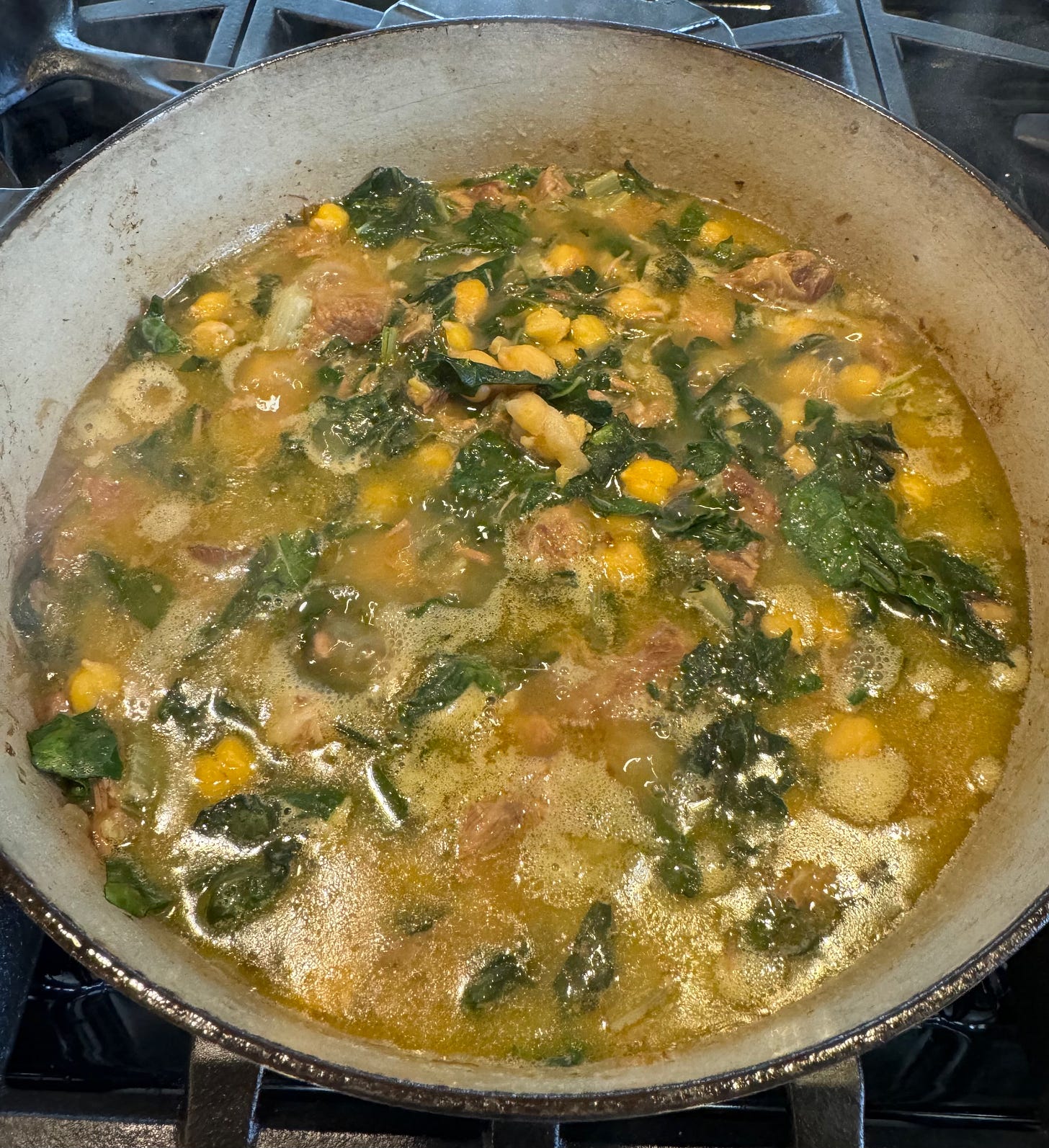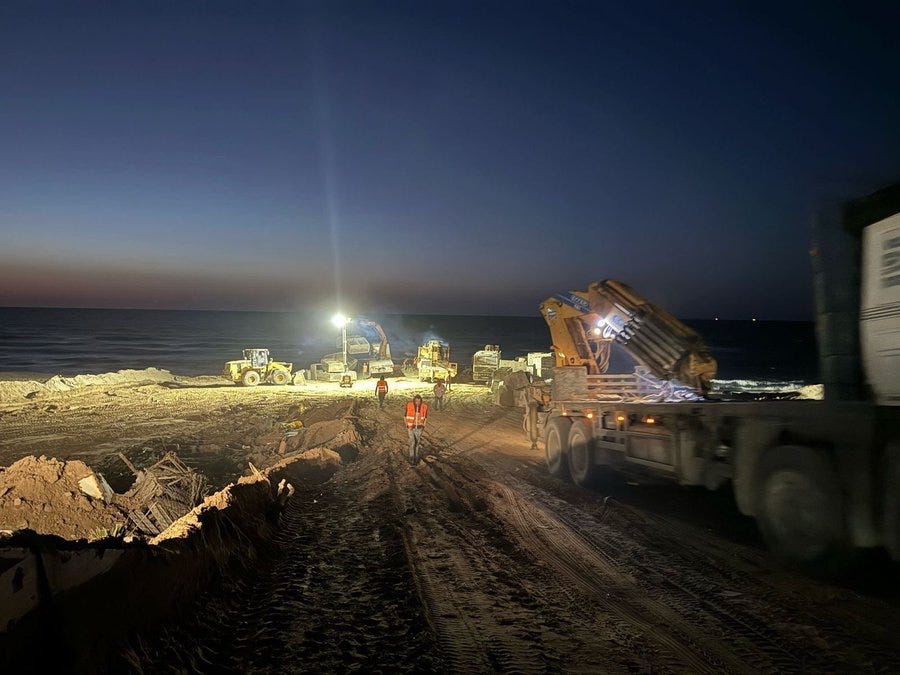SOS for the Hunger Moon
with a recipe for a great dish to end the fast and bring salam/shalom where it's needed most
The Hunger Moon falls at the end of winter when game is scarce and predators are particularly hungry. . . .The Hunger Moon was also known [to Native Americans] as Little Famine Moon and Bony Moon. . . [T]he threat of famine after a long winter was real, for people as well as for animals. https://www.hortmag.com/gardeners/the-hunger-moon-and-other-moons
It is Lent now and also Ramadan, a rare concurrence of the two fasts, one observed by Christians, the other by Moslems. The Christian fast falls every year in the late winter weeks before Easter when for 40 days--six weeks excluding Sundays--the devout, according to tradition, abstained from meat and meat products, including eggs and dairy foods, milk, butter, and cheese. (This is in the past tense because most Christians nowadays fast only on Fridays during Lent.)
Ramadan is different in several ways, first of all it depends on a lunar calendar and so shifts with that calendar every solar year, sometimes falling in midsummer or at Thanksgiving, or other times of the year. More importantly, Ramadan is a total fast from sunrise to sunset—very strict observers may even preclude drinking water during that period. Once the sun goes down and the imam announces from the minaret that the day’s fast is over, Moslems can and do feast on anything that is not otherwise precluded by Islam.
I remember Ramadan in Kairouan (Tunisia) years ago when I happened to be in the central market, a typical place for me, as the call came from minarets all across the city, echoing each other with the news that God is great, Allahu akbar, proclaiming the end of the day’s fast. And suddenly, bright strings of fairy lights flared into life, outlining mosques and shops, arching over the market alleys, dazzling the darkness, while the crowds swarmed, hurrying, scurrying, on their way to a mosque for prayer, buying sweets, munching on dates from some desert oasis, the theory being that dates were the appropriate food for breaking the fast, rendering strength for prayer before retiring home at last to eat.
I also remember a magnificent Iftar, the daily meal to break the fast, served at the table of a Lebanese magnate, luxuriant piles of food, bronzed roast turkeys and baby lambs, stuffed vegetables overflowing with savory meats, piles of aromatic rice, and, despite the fact that it was a Moslem feast, bottles of arak and prized wines from the Bekaa valley. Much of this was left untouched by the group of foreign guests—but the point was made and that point was: Abundance. It was all consumed in the end, nothing was wasted. After the guests, lesser members of the family arrived (the old aunties who came timidly down the stairs, the cousins who lived on the property and worked as retainers), then by the house servants who took the remains of the feast back to the kitchen, and finally by the indigent who had been invited to share by the back door.
So why is my mind so occupied with fasting and the accompanying feasts? Partly because it’s that time of the year, recognized by indigenous Americans who called the March full moon the Hunger Moon, when stocks are running low and the new season’s bounty has yet to begin. Traditionally, it’s time to tighten the belts and pray for an early spring, to search the woodlands and stream edges for green shoots of wild onions, ramps, fiddleheads, the first sprouts of tasty milkweed, and dandelion greens, and to set traps and weirs for the fish that begin now to climb the rivers--salmon, alewives, eels, shad, even big sturgeon.
But fasting and depletion are on my mind for another reason, one we all, I think, recognize with fear and even horror, as we witness from an uncomfortable distance what is happening in the Middle East, especially in Gaza where Ramadan has arrived with an anguished irony, the time of ritual fasting having morphed into a time when for too many there is literally nothing to eat. Israel is determined to root out Hamas, and with very good reason, but in the process, Israel has created a well of desolation that will not long be forgotten. I’m being timid here. It may not ever be forgotten, just as the French massacre of Cathars in the Languedoc, or the British slaughter at Amritsar, or the US extermination of native tribespeople at Wounded Knee and so many other places, have remained present in our consciousness to this day--just to mention a few of the more notable historic butcheries committed by humans against other humans.
So what can we do? Here’s what I urge: Send money to Chef Jose Andres’s remarkable organization, World Central Kitchen, which is in fact actively doing something, actually transporting food from Cyprus to the Gaza coast where kitchens have been set up to feed desperately hungry people, despite constant terrifying threats of bombardment. Just this past week, WCK’s Operation Safeena delivered 200 tons of food to northern Gaza, unloading on a makeshift jetty built almost overnight from the rubble of bombed buildings. In addition, at least 1,500 truckloads of WCK food have crossed into Gaza wherever and whenever they have been allowed.
Another point I think is important and is sometimes forgotten about this astonishing organization: This is not a do-good, angels-of-mercy crowd descending from afar on a helpless population. WCK’s operations, wherever they are in the world, involve local people, local cooks, local chefs, to be certain that people get what they need and what they can use. (I think of the response to the Irish Potato Famine by well-meaning Americans who shipped quantities of cornmeal to a population that had absolutely no idea what to do with it.)
And your money, my money, can help with this because it costs a lot to feed the numbers of people who need it, it costs to purchase food, it costs to fuel boats and to ship food from distant places to warehouses, it costs to rent warehouse space, it costs to hire dock workers and truck drivers, and while much of the work is voluntary, there are still major expenditures involved. Here’s how you can support: Go to the World Central Kitchen website, https://wck.org (easy to remember), click on “Ways to Give,” at the righthand top of the page, and follow directions. I’m signing up for a monthly donation. It’s not much but every bit helps and it also helps to ease my guilt at not being able to do more.
But there’s another response I’m taking too and it’s this: I’m spending more time thinking about and talking about Gaza, about the people of this mini region, who they are, where they come from, and because I believe in the power of food to express a culture, I think about how and what Gazans eat—or will eat when they can once again gather around a Ramadan table, which hopefully will be soon—next year perhaps in Rafah or Khan Younis or Gaza City.
The following content is for paid subscribers only. If you’re not one, please consider joining us On the Kitchen Porch:
Keep reading with a 7-day free trial
Subscribe to On the Kitchen Porch to keep reading this post and get 7 days of free access to the full post archives.




